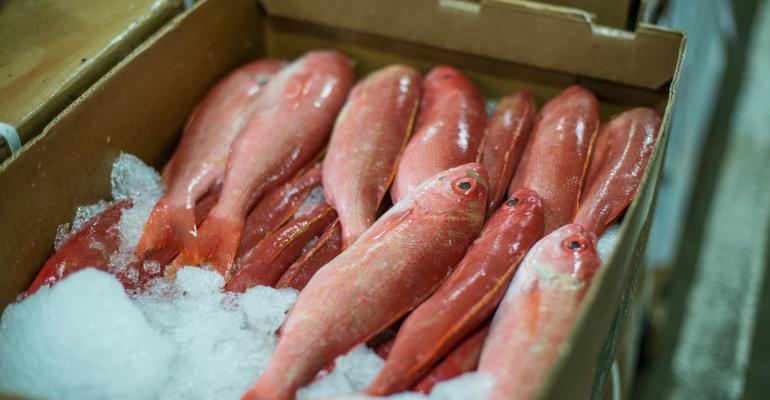Guarding seafood from contaminants is vital for protecting consumers and avoiding the financial losses and damage to reputations that come from merchandising items with adulterants. But achieving total success will not come easy.
With a plethora of elements threatening food safety, it is imperative that operators have the fortitude to reduce risks by developing and adhering to the necessary protective guidelines. That includes being aware of all threats and leveraging effective inspection technologies, including metal and X-ray detectors.
“The global food supply is under constant threat of contaminations, and this generates a demand for effective test products that can ensure food safety,” reported Portland, Ore.-based Allied Market Research. “Microbial pathogens, such as bacteria, viruses, environmental toxins, food allergens and adulterants, residues of drugs, and agricultural chemicals, are hazardous to human beings, if consumed unchecked.”
Seafood hazards can vary in accordance with whether a product is wild-caught or farm-raised, said Thomas White, seafood manager, supply chain food safety, for NSF International, an Ann Arbor, Mich.-based food safety auditing firm and standards developer.
Metal, glass, plastic and netting are among the objects posing food safety threats by contacting wild species along the supply chain or during processing, along with such extraneous materials as bones, fins and shells.
“Most contaminants associated with wild-caught species are related to the environment or the fishing vessels themselves,” White said, and can emanate from oil spills, sewer discharging into open waters, industrial chemical spills, or dumping. Contamination also can occur on vessels from hydraulic leaks into seafood holding tanks; the use of chemicals that are not approved for food equipment use; and the improper removal of chemical residuals from vessel processing equipment.
Contamination of aquaculture products typically occurs between harvesting and end-product production, he noted, and can result from the spread of chemicals that are being used in other types of agriculture in surrounding areas, White said.
Antibiotics can pose food safety risks as well. “While many antibiotics are approved for use with various types of seafood species, requirements exist to help ensure withdrawal times after use,” he stated. “These requirements must be followed to help ensure there are no residual antibiotics in the edible portions of the species.”
Supermarket safety
It is crucial, meanwhile, that supermarkets follow stringent safety procedures when managing all seafood selections to best protect shoppers, White said. “Retailers, as the last line of defense in the supply chain prior to products being purchased by consumers, should have well-established specifications to help ensure end products meet food safety requirements,” he stated.
Suppliers also are responsible for providing products that meet both the retailers’ guidelines and seafood Hazard Analysis Critical Control Point (HACCP) regulations, White said. HACCP is a management system in which operators address food safety through the analysis and control of biological, chemical, and physical hazards from raw material production, procurement, and handling, to manufacturing, distribution, and consumption of the finished product.
Chemical testing, however, is the only true way of pinpointing contaminants within seafood, White said, noting that while sensory evaluations can oftentimes detect any type of environmental contaminant, “aquaculture drugs and antibiotic residues are only detectable through laboratory analysis.”
Factors making it difficult to keep seafood free of contaminants include a lack of product traceability from vessel to retail on a global scale, he stated, noting that other proteins, such as meat and poultry, typically avoid such issues by undergoing monitoring from “farm to plate.”
Along with varying seafood regulations among the countries where wild seafood harvesting is occurring, some nations also lack or have limited regulations governing drug and antibiotic use during aquaculture, White stated.
False representation by suppliers, such as incorrectly promoting where harvesting and product production is occurring, pose food safety challenges as well, he said, along with insufficient product testing by suppliers and retailers.
“Operators should establish rigorous specifications to identify what is acceptable and what is not in their seafood products,” White stated. “Incorporating validation into the production process, such as requiring certificates of analysis, letters of guarantee, or a testing program can address food safety risks.”
Having HACCP plans that govern each part of the supply chain also will better identify the foreign material hazards that are analogous to the type and species of seafood under production, such as whole fish, fillets, steaks, or minced, he said.
“Suppliers can work to eliminate contaminants in their products by determining the root causes of contamination, taking corrective action, and conducting ongoing verification,” White added.





